

Long before sophisticated electronic detectors were available to physicists, they had to track the movements of particles by using more analogue methods. One of these was the cloud chamber that you're probably familiar with. Another was the bubble chamber. This is the story of the bubble chamber and the remarkable women employed as "scanning girls" to plot the particle's movements.
Originally published on Medium, 1 October 2024
https://medium.com/big-science-at-stfc/bubbly-personalities-meet-particle-physics-scanning-girls-f2794d3cf7f2
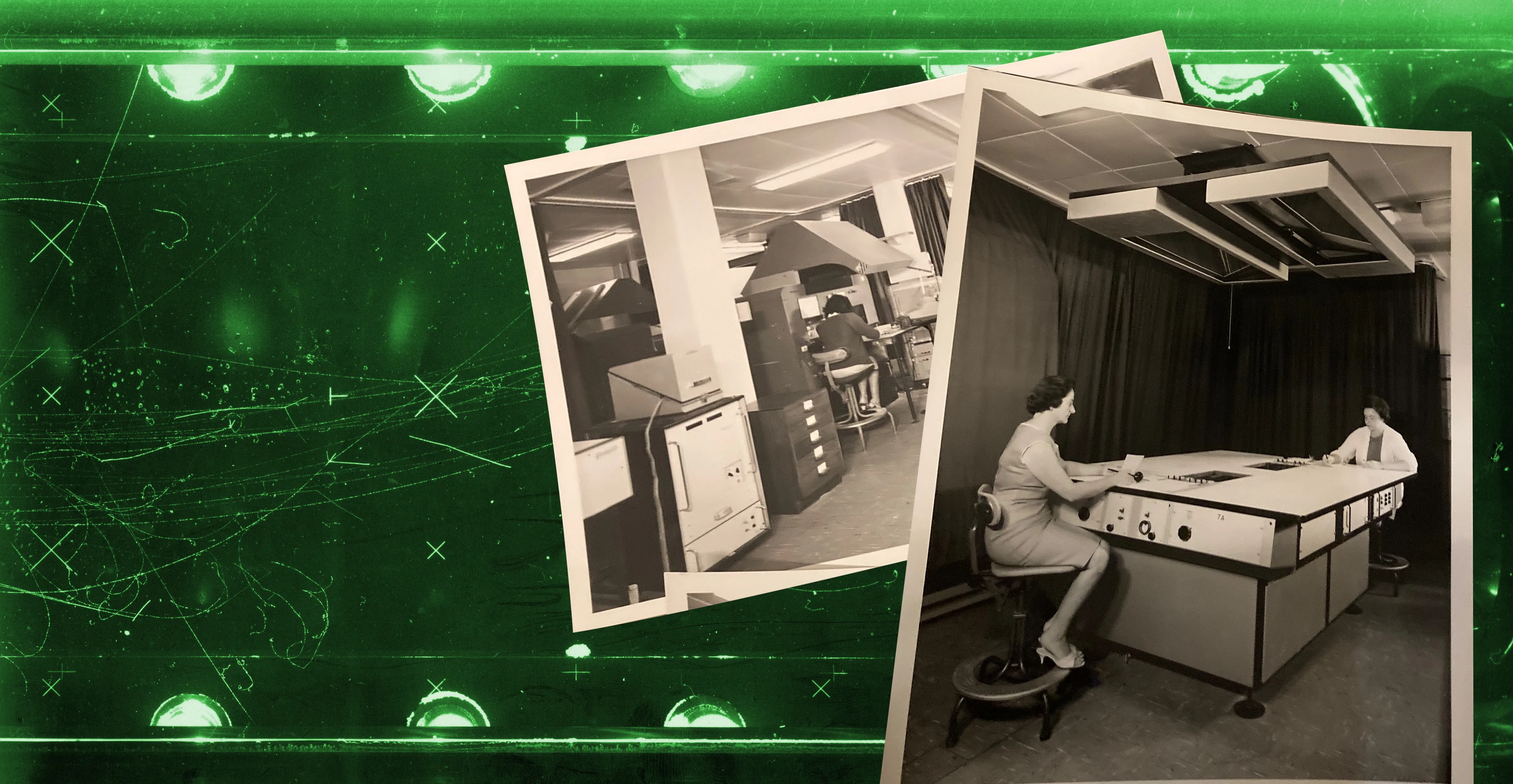
In a dark room beneath the particle physics offices at the Rutherford laboratory in the UK, the latest Paul McCartney melody streams from a radio, helping a dozen or so scanners stay alert. The women's faces are lit only by screens showing hundreds of scrolling photographs of curving particle paths, as they search for subtle signs of interesting events.
From the 1960s to the 1980s, scanning labs like this were at the cutting edge of particle physics. They analysed photographs taken using bubble chambers, an early form of particle detector which allow you to view the paths of electrically charged particles.
George Kalmus, who led the Rutherford bubble chamber research group for over a decade, is still captivated by the images the chambers revealed.
"The fundamental thing you see is the footprints... not the particle itself... and it's like how if you look at the footprints of an animal in the snow, you can tell quite a lot about it. You can tell what direction it's going in; you can tell how fast it's going, because of whether it's got long steps or short steps; you can see if at some point something else has come in and eaten it."
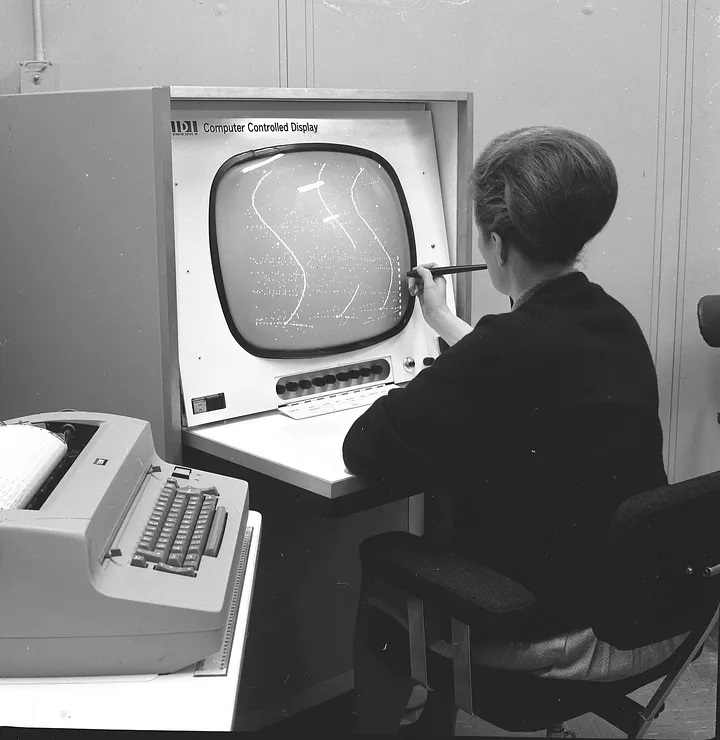
Earlier in his career, Kalmus had helped to build one of the chambers used at Rutherford when he worked at University College London. His PhD supervisor had learnt about bubble chambers from their inventor, Don Glaser.
Glaser built the first bubble chamber in 1952. Although he filled one early prototype with beer, bubble chambers are normally filled with liquid hydrogen because its atoms are the simplest -- made of just one proton and one electron. A piston applies intense pressure to this liquid, allowing it to superheat and reach a higher temperature than its boiling point, without boiling.
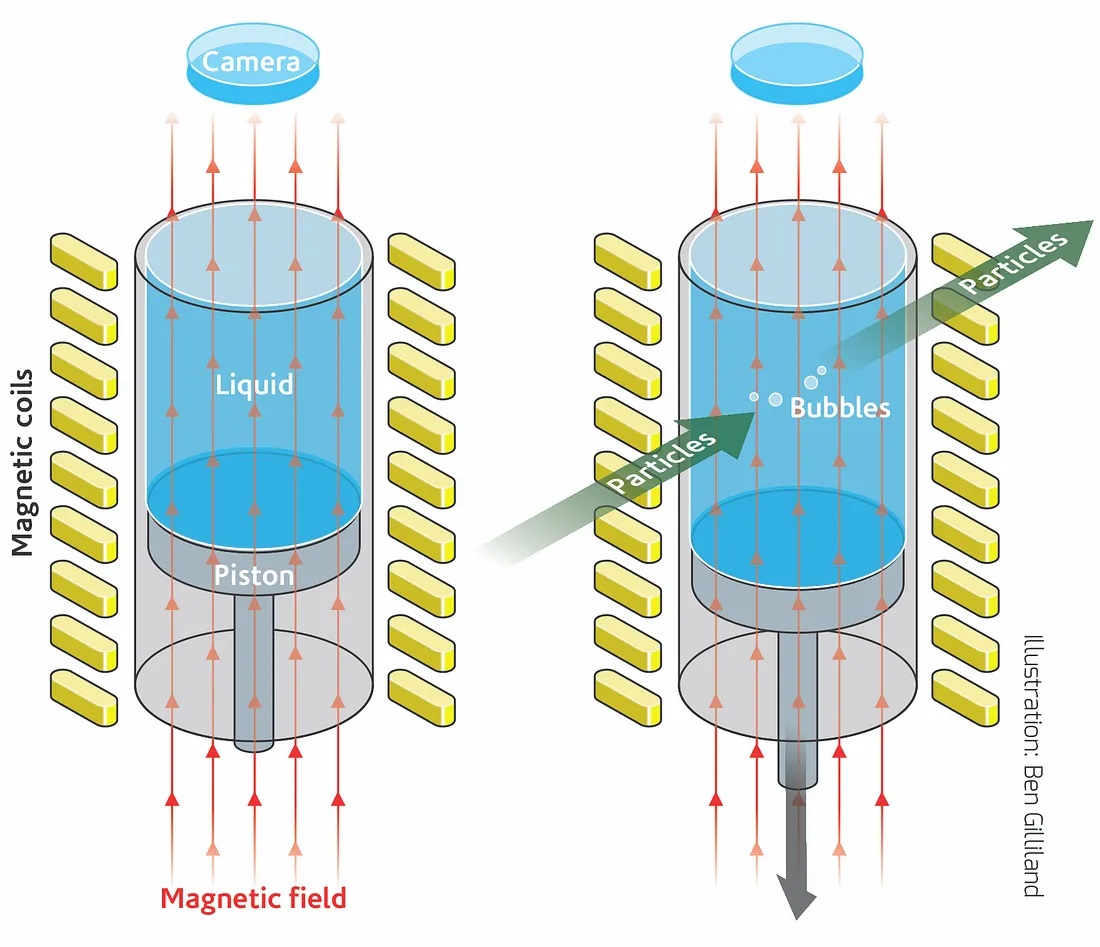
Dropping the piston drastically reduces the pressure, leaving the liquid in a very unstable state. This means even a very small amount of energy will cause it to boil.
A high energy charged particle then enters the chamber, having been sped up using a particle accelerator (at Rutherford, this accelerator was Nimrod). This particle ionises a hydrogen atom in the liquid, separating its electron from its proton. When the electron and proton recombine, energy is released that causes the liquid to boil locally and produce a bubble.
As the charged particle moves across the chamber, it interacts with different hydrogen atoms to form a visible path which can be photographed from three angles using three cameras. A magnetic field through the chamber causes different types of particles to curve differently, allowing researchers to identify what they are.
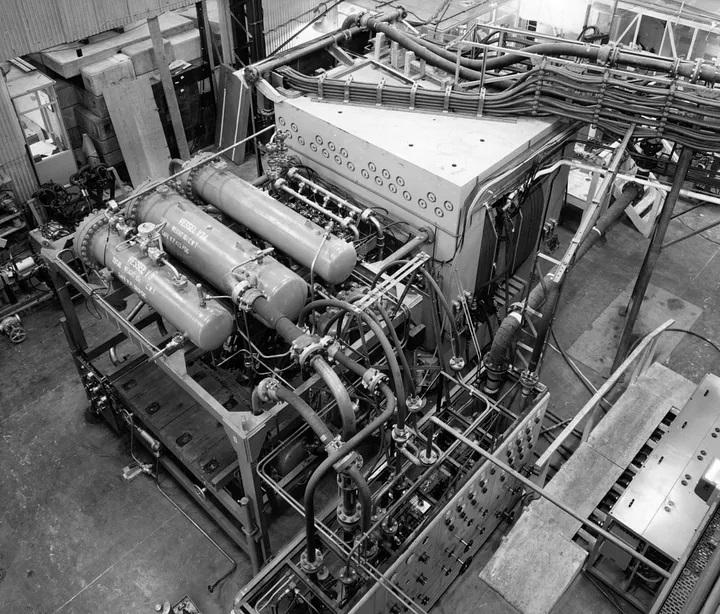
Initial analysis of the photographs was carried out by scanners, requiring such a high level of focus and accuracy that shifts were limited to four hours. This made the job particularly suitable for mothers of young children trying to fit work around childcare.
"In those days there wasn't a huge amount of part time work around that gave a woman a decent wage" said Pamela Delaney, who joined the bubble chamber group in the early 1960s. Fascinated by science since school, Delaney told me "I thoroughly enjoyed it because... I actually liked to know exactly what I was looking at and was very interested in what the particles were, how they broke down."
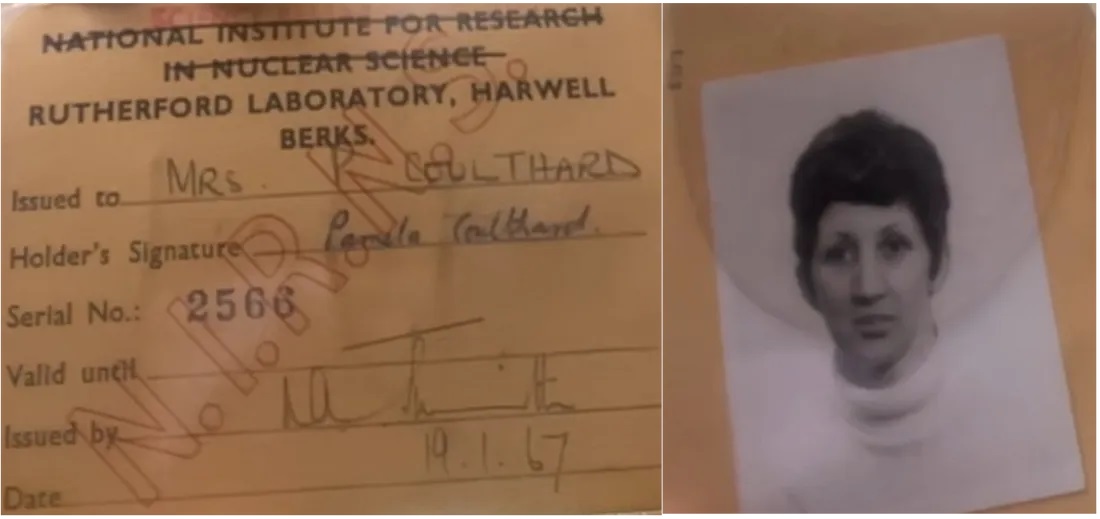
Scanners, often more condescendingly called "scanning girls," were first taught to develop the film using a machine which processed the film at a maximum rate of 3000 feet per hour -- incredibly fast for the time period. The film was then put onto the scanning machine which was used to view the three simultaneously captured images together. If scanners saw an event of interest had been captured, they noted the frame number to be measured later.
Delaney was also trained to use the different digitisation and measuring machines, including working the fairground-style joystick on an image scanner called a Duff machine.
She found them pretty awful to use. "One evening I had a problem [and] I made a call for the electrician. This chap came in and I said, "I know why it's called a Duff machine because it's duff." It turned out he wasn't the electrician, it was Professor Duff." Fortunately, Delaney recalled, he saw the funny side.
Originally temporary workers with little protection, the scanners gradually worked to improve their status, pushing for permanent positions, salary increases and paid holiday. Good scanners were valuable to the department, with one report listing the accuracy of an experiment as "girl dependent."
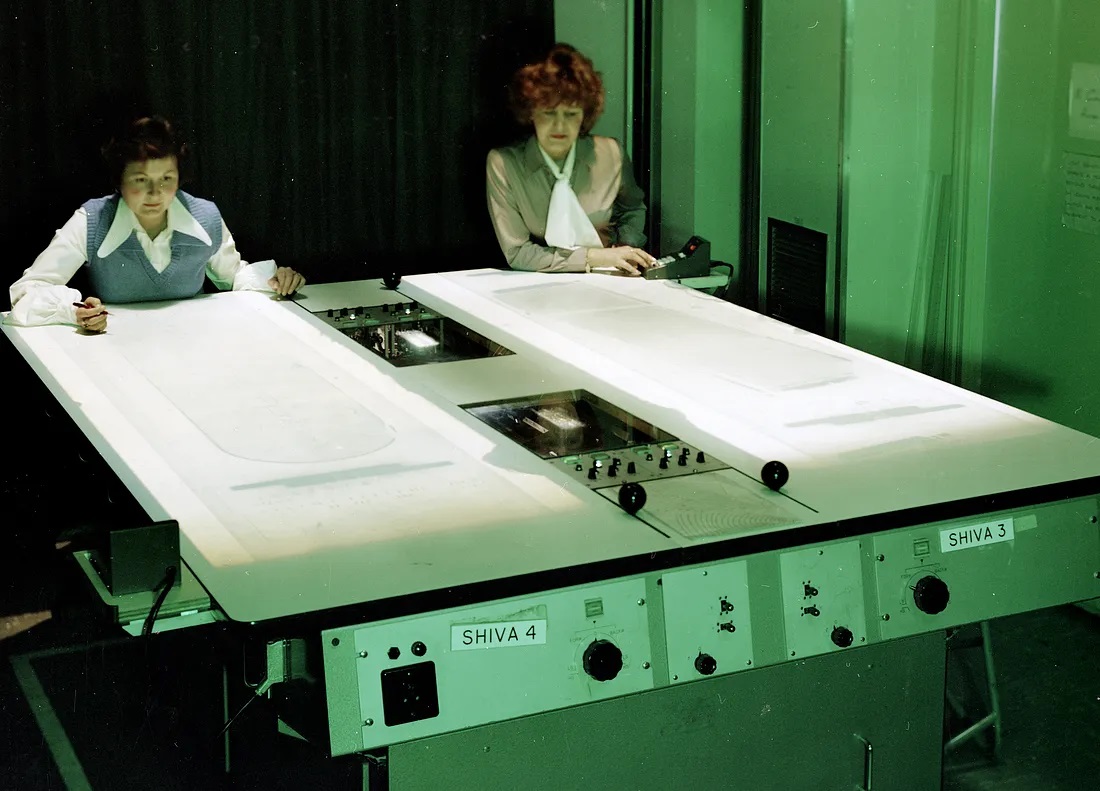
As they gained experience, many scanners did manage to rise up the ranks of the group with some, such as the late Jill Cheney, eventually gaining the title "Physicist." Many more were made supervisors, including Delaney, who co-led the night-shift with Janet Smith.
Smith had worked as a typist at Harwell laboratory next door before becoming a scanner in the early 1960s. She later took a break to have her third baby, but missed the camaraderie and rang Cheney just three months later begging to come back.
She was keen to tell me about the department's attempt to set up a night shift staffed by male university students. "They thought that they would be extremely clever and better at it. But they weren't, because they were smoking pot." One night, they started swinging from the gantries of the machines, knocking everything out of kilter. From then on, the laboratory returned to hiring primarily local mothers.
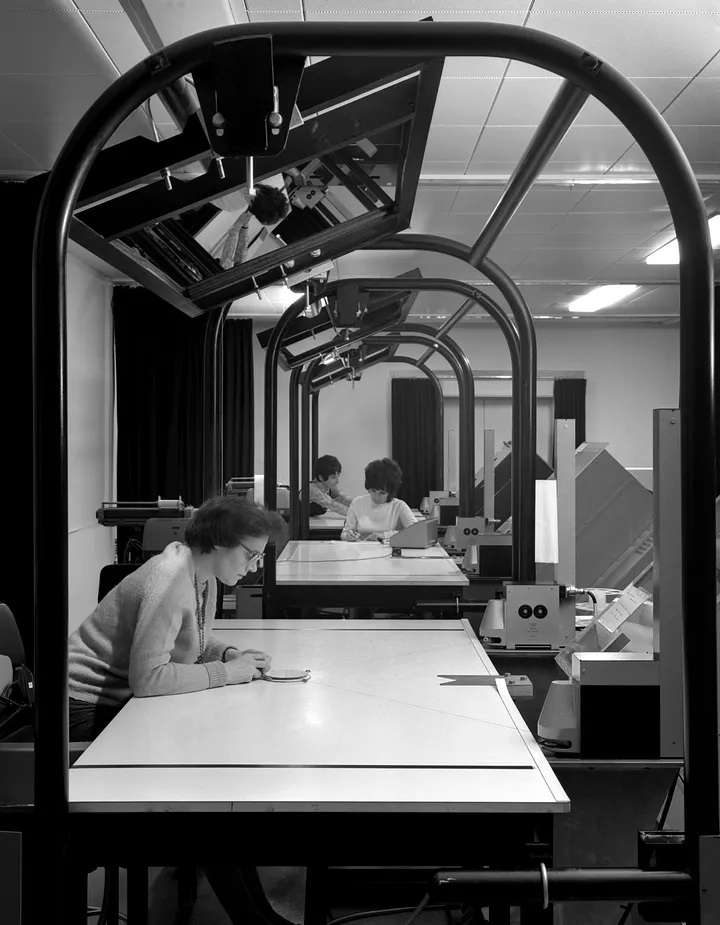
Bubble chambers played a vital role in the history of particle physics. Kalmus, who led bubble chamber research at Rutherford throughout its heyday, stressed "For 20 years... it ruled supreme. Every particle physics group in the world had a bubble chamber."
They facilitated a wide range of key discoveries, including neutral weak currents, which led to the realisation that the electromagnetic and weak forces were two different aspects of the same electroweak force. Scanners made every bubble chamber experiment possible but received almost none of the credit.
This helps us reflect on how we fairly recognise the contributions of those in technical roles. Deciding who exactly to include on the author lists of scientific papers is never simple, but it is important to consider whose work is being recorded for posterity. When I first decided to write this article, I could find no names of scanning girls and without Facebook, where I found Delaney and Smith, I would still know almost nothing about their work.
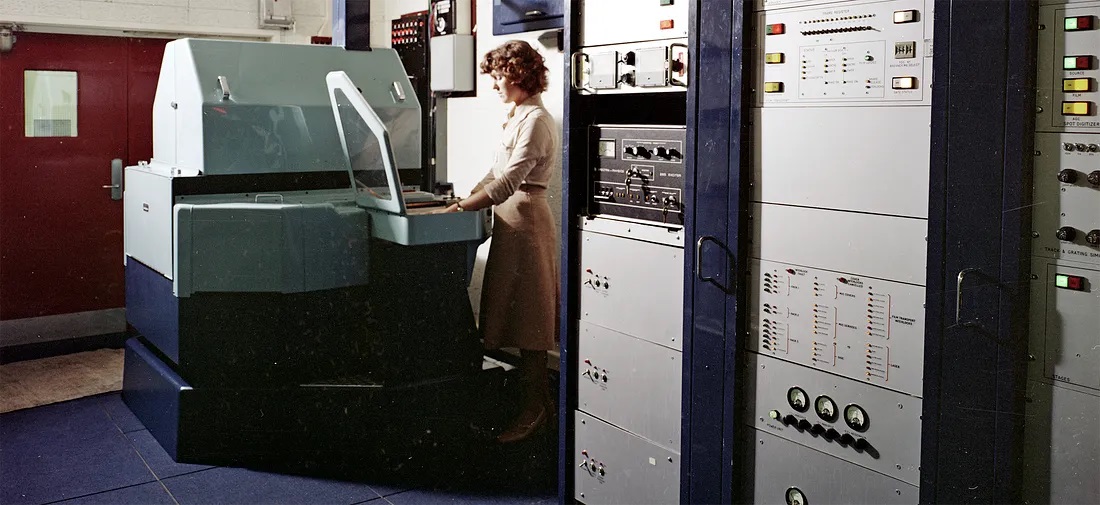
Eventually, bubble chamber research started to wind down. Smith reflected that "[after] so many years of being in that bubble chamber group, we kind of thought it would go on forever... then all the electronics started to take over." Alongside developments in computing, the late 1970s saw the arrival of large-scale particle colliders, making bubble chambers largely obsolete.
When particle physics moved on, so did the scanners. Rutherford had slowly begun to employ women more widely and many scanners worked at other research groups within the laboratory until they retired. Many women, including Delaney and Smith, moved to computing groups, with others taking roles in data handling or administration.
As a female physics student, the story of the scanners feels like part of my story. They were among the first women to be employed in large numbers globally to contribute to particle physics, helping make it easier for me to make my own contribution.
Although their work was essential, it's important to note that many scanners would have chosen different scientific roles if more had been available to them. These jobs often required physics degrees, and although some women of the time period managed to obtain them, they formed a tiny minority. Things have improved, but women still make up just 22 percent of UK physics undergraduates. We have a very long way to go.
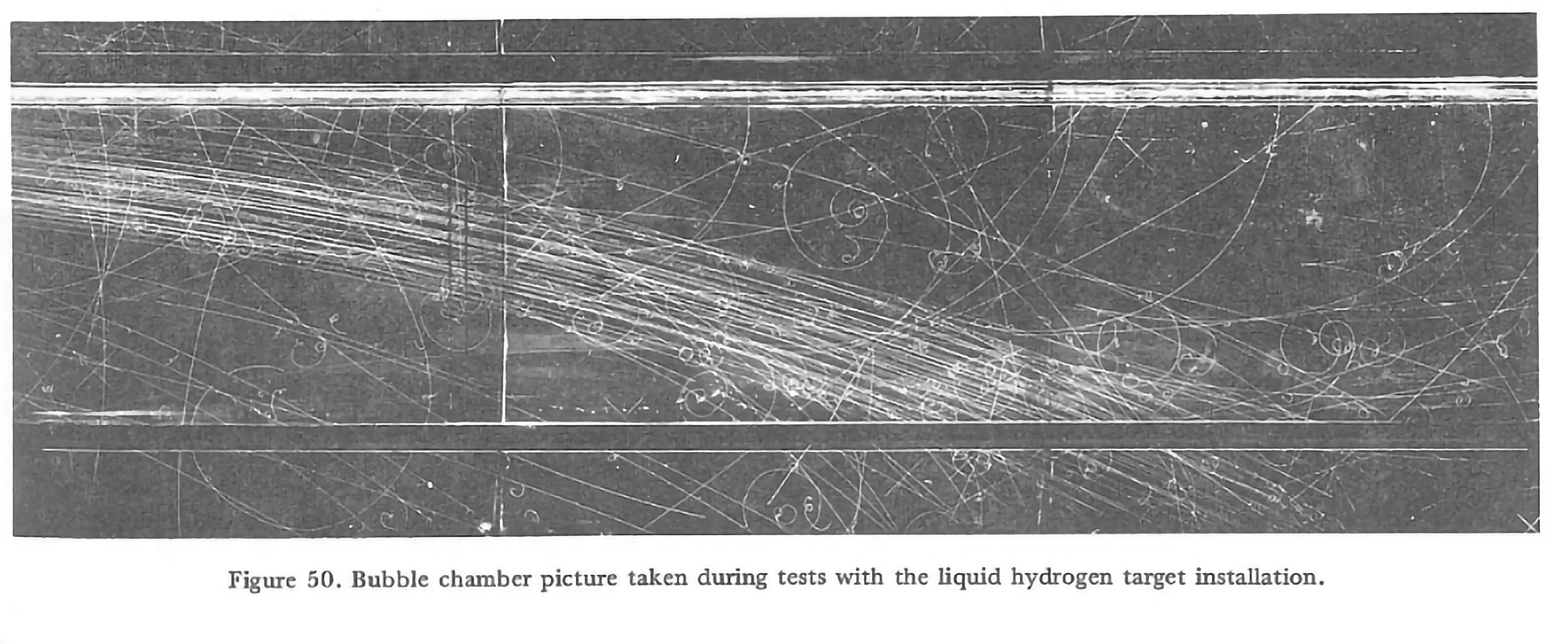
In today's digitised world of particle physics, this film is a beautiful relic of the days when you could handle data in such a tangible way. Bubble chambers provide a helpful reminder of the wonder of scientific discovery, and the people who make it possible.
Story by: Emma Hattersley, STFC Particle Physics Department